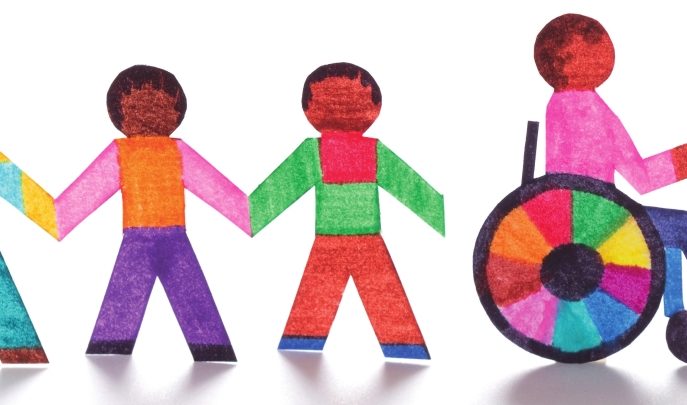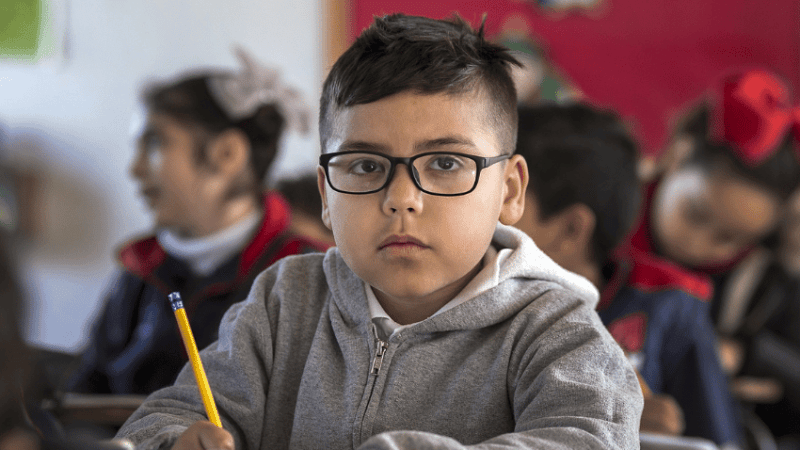Why ‘Inclusion’ Can Cause Problems For Pupils With SEND

Could a well-meaning focus on ‘inclusivity’ actually be depriving some children of their entitlement to effective education? Jarlath O’Brien thinks so…

The school that I serve is very non-inclusive. We are unable to effectively educate the overwhelming majority of children in this country. To me this is a statement of the obvious, but how many headteachers do you hear saying something similar?
It’s easier for me to make such a point as the leader of a special school, a sector which educates 1.1% of all children in this country (how can I be inclusive with a stat like that?) But the DfE’s latest statistics on SEN in England show that 14.4% of all children – that’s one in every seven – have some form of identified special educational need. Children with SEN are in pretty much every classroom in the land. It is one thing for me to say that my school is noninclusive, but a mainstream headteacher saying the same thing would be regarded as elitist or selective.
In this piece I am going to argue that focusing on inclusion leads us to consider how we can best fit the child(ren) into the system as it exists now, leading, perversely, to exclusion and an over-reliance on the special sector. Instead, I will argue that we need to focus on how we can provide that to which each child is entitled to in order for them to thrive.
I claim a wide perspective on schools. I started life as a science teacher in a comprehensive, have been employed in an independent, selective boys’ school and, for the last 10 years in three very different special schools. I have worked with young people from the age of 2 to 19, young people who have gone to Oxford and Cambridge, young people who have gone to prison and young people who have died due to a life-shortening condition. With the sole exception of the independent school, which made no secret of the fact that it selected by academic ability (and ability to pay), all the settings had limits, whether they were prepared to admit it or were even aware of it, on whom they could educate well.
Each of them, and this applies to all schools, has their niche, their official (or unofficial, in some cases) admissions criteria. It is easy to find children whose needs fall outside of those criteria. Given that, it is no surprise that I see the current system as one in which the child – the one yet to develop fully and with a set of complex needs to boot – has to fit in order to be accepted into the school, that organisation of well-trained, grown-up professionals.
What’s possible
Let’s go back to the beginning – when we claim to be inclusive the same question always pops into my head: “Included in what, exactly?” How are children being included? What are you trying to teach them? Is the way you are trying to teach the way they learn best? Is this appropriate for their stage of development whilst being ageappropriate, too?
The ideal for inclusion is that all children should be taught well in their local mainstream school and have their associated needs met. It is their basic entitlement, so the argument goes, and anything different is to deny them at least some part of their human rights.
This is not something that I believe is possible. It is not possible because there are some children, a very small number, whose needs are so complex and/or require such specialist skill and knowledge from staff and/or some specialist equipment and/or can exhibit extreme behaviours that they cannot be meaningfully included and well educated in a mainstream school. This is not the problem. The problem is expecting the children with SEN in a school to simply fit in to what the school is doing without any depth of thought as to what it will take for these children to be successful adults.
To pretend to include this group in the life of a mainstream school without any meaningful adaptation to their provision is far more damaging and, in my view, robs them of their entitlement. This is fake inclusion and it is something that I see regularly. It is not necessarily deliberate. In fact, the vast majority of fake inclusion I see is carried out by extremely hardworking staff in great schools doing their absolute best for a child; nonethless, the child is effectively in a school of one, and just happens to be surrounded by hundreds of other children with whom they have very little to do.
This becomes critical when we take a look at some of the life outcomes for children with learning difficulties:
- They will die at least 15 years younger than you.
- They are twice as likely to be bullied at primary school.
- They are seven times more likely to receive a fixed-term exclusion from school.
- They are seven times more likely to receive a permanent exclusion from school.
- They are seven times less likely to work than you.
- If they do work, it will probably be part-time. It will probably be poorly paid.
- They are twice as likely to live in poverty as you.
- They are over four times more likely to have mental health problems as a child.
- They are more likely to have children with their own learning difficulties.
- They are at least three times more likely to end up in prison.
Once we have absorbed the enormity of these statistics we can begin to focus on the heart of the matter. For me those stats are professional background; imagine what it feels like as a parent to read them. The current system does not work for these children – simply shoehorning them into our schools to appease our consciences is not good enough.
It’s time we stopped talking about inclusion and started talking about entitlement. Can you provide what these students are entitled to? If so, great. If not, don’t waste their time and yours pretending that you can.
It starts here
To improve the dire set of outcomes for children with learning difficulties, we have to address the causes of the problem. In my view the main obstacles to tackle are:
- The culture of performativity and the end-point narrative. This leads some schools to avoid any perceived risks to school performance indicators, their outstanding status or their Teaching School status.
- Money and support – the two biggest sources of concern noted by The Key’s recent survey of SENCos. The diminished role of LAs will do nothing to help this.
- The view that the child with SEN reduces the chances of the others – read Dyson et al (2004) to be disabused of this notion.
- A lack of understanding that negative behaviours communicate an unmet need and that these behaviours can be improved over time.
- Systems designed to meet the needs of adults such as inflexibility over uniform, an insistence that all children have school dinners, or a stance that all children will do GCSEs.
About the author
Jarlath O’Brien is headteacher of Carwarden House Community School in Surrey











